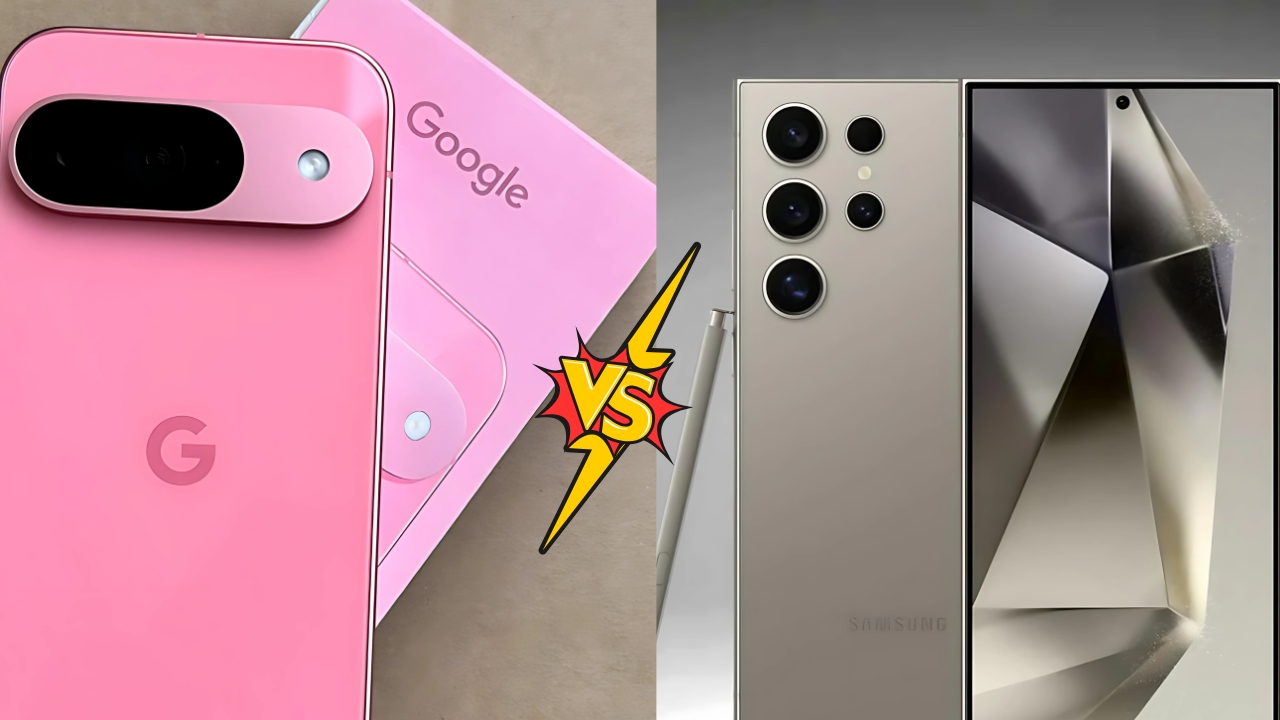Pixel 9’s AI-Powered Photography:The smartphone photography landscape has never been more exciting. With AI taking center stage, both Google’s Pixel 9 series and Samsung’s Galaxy S24 lineup are pushing boundaries in ways that seemed impossible just a few years ago. But which one actually delivers the goods when you’re trying to capture life’s moments?
Google Pixel 9: The Group Photo Game-Changer
Let’s start with what might be the coolest feature to hit smartphones this year: Add Me. Picture this scenario – you’re on vacation with friends, and everyone wants to be in the group photo. Normally, someone gets stuck behind the camera, or you’re all cramming into an awkward selfie. Not anymore.
Add Me uses augmented reality to guide you through taking two separate photos and seamlessly merging them into one perfect group shot. First, you take a photo of your group, leaving some space for yourself. Then you hand the phone to a friend, step into the frame, and the AR overlay helps them align the second shot perfectly. The result? Professional-quality group photos where everyone’s included, even the photographer.
The magic doesn’t stop there. Best Take tackles another universal problem – getting everyone to smile at the same time. It combines multiple shots to create the perfect group photo where everyone looks their best. No more “let’s take another one” moments.
Magic Editor has received significant upgrades with Auto Frame and Reimagine features. Auto Frame can suggest better compositions and even expand your image using generative AI to show more of the scene. Reimagine lets you completely transform backgrounds by simply describing what you want to see.
For video enthusiasts, Super Res Zoom Video delivers up to 20x zoom while maintaining quality, and the new Night Sight in Panorama mode captures stunning wide-angle shots even in low light conditions.
Samsung Galaxy S24: The Editing Powerhouse
Samsung took a different approach, focusing heavily on post-capture editing capabilities. The Galaxy S24’s Generative Edit feature allows you to select, move, resize, or completely remove objects from your photos. Want to move that person who walked into your landscape shot? No problem. Need to remove a trash can from your perfect beach photo? Consider it done.
What sets Samsung apart is their Edit Suggestions feature, which analyzes your photos and automatically recommends improvements. The AI might suggest removing shadows, eliminating reflections, or applying a remaster effect. It’s like having a professional photo editor looking over your shoulder.
The reflection removal feature is particularly impressive. Anyone who’s tried photographing through glass knows how frustrating reflections can be. Samsung’s AI can detect and remove these automatically, opening up new possibilities for architectural and indoor photography.
Instant Slow-mo is another standout feature that uses AI to interpolate frames, allowing any video to be slowed down regardless of the original frame rate. This means you can create dramatic slow-motion effects from regular videos after the fact.
Hardware Foundations Matter
The Pixel 9 series shares cameras across models, with an ultrawide lens that gathers 110% more light and focuses as close as two centimeters for stunning macro shots. The updated imaging pipeline optimizes everything from exposure to skin tones for more natural-looking photos.
Samsung’s Galaxy S24 Ultra takes a different route with a massive 200MP main camera and multiple telephoto lenses offering optical zoom at 2x, 3x, 5x, and 10x. The hardware approach gives Samsung more flexibility for cropping and digital enhancement.
AI Philosophy: Real-Time vs. Post-Processing
Here’s where things get interesting. Google’s approach focuses more on capturing the perfect moment in real-time. Add Me and Best Take work during the photo-taking process, ensuring you get great shots without extensive editing later.
Samsung leans heavily into post-processing power. Features like Portrait Studio can transform your photos into different artistic styles, while Sketch to Image lets you draw on photos and generate AI artwork. The Galaxy S24 is essentially a mobile photo studio.
The Night Photography Battle
Both phones excel in low-light scenarios but take different approaches. Samsung’s Night Mode uses advanced AI multi-frame processing that merges 30 images into a single remarkable picture, optimizing every pixel for maximum detail and color accuracy.
Google’s Night Sight has been the gold standard for years, and the Pixel 9 builds on this foundation with improved algorithms and the new panorama capability for capturing expansive nighttime scenes.
Which Should You Choose?
The decision really comes down to your photography style and priorities. If you’re someone who wants great photos straight out of the camera with minimal editing, the Pixel 9’s real-time AI features like Add Me and Best Take are game-changers. The phone thinks ahead, helping you capture better moments as they happen.
If you enjoy the creative process of editing and want maximum control over your final images, the Galaxy S24’s extensive post-processing toolkit gives you more options than any smartphone before it. The ability to completely reshape reality through Generative Edit is genuinely impressive.
Both phones represent the cutting edge of AI photography, but they serve different types of users. The Pixel 9 excels at making great photography accessible to everyone, while the Galaxy S24 appeals to those who want professional-level editing tools in their pocket.
The real winner? Anyone who loves taking photos. We’re living in an incredible time for smartphone photography, and both of these devices prove that the future is already here.
ALSO READ: Google Pixel 10 Pro vs 9 Pro: Essential Upgrade Guide for Google Pixel 9a Users
